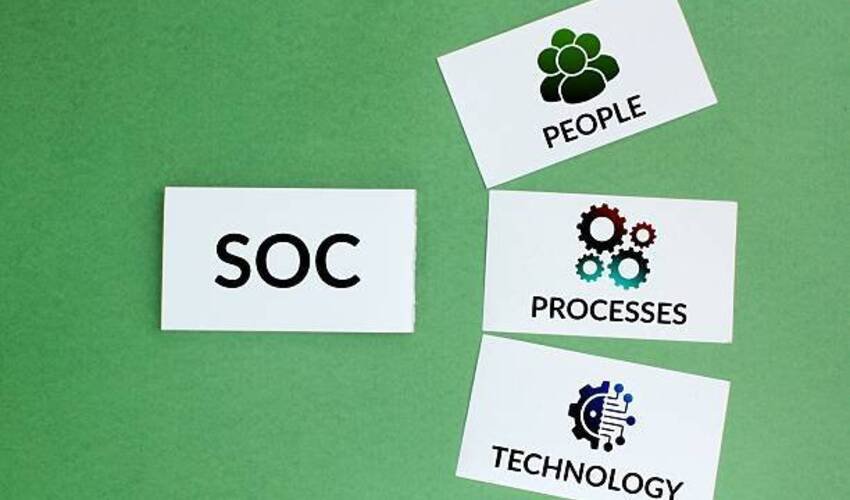In today’s digital world, data security is more important than ever. Businesses store massive amounts of sensitive information online. Protecting that data is not just smart—it’s essential. One of the best ways to prove your organization is secure is through a SOC 2 Type 2 Report.
This report has become a standard for demonstrating trust, transparency, and compliance in technology and service industries. Let’s explore what it means, why it matters, and how it helps businesses in 2025.
What Is a SOC 2 Type 2 Report?
A SOC 2 Type 2 Report is an audit report that evaluates a company’s data security controls over time. SOC stands for “System and Organization Controls.” It was developed by the American Institute of Certified Public Accountants (AICPA). This report measures how well a company follows strict security practices. It focuses on protecting customer data and maintaining trust. Unlike the SOC 2 Type 1 report, which reviews controls at a single point in time, the Type 2 report tests those controls over several months—usually six to twelve. This makes it a more reliable and detailed certification of ongoing security compliance.
Why SOC 2 Type 2 Matters in 2025
In 2025, cybersecurity threats are becoming more complex and frequent. Customers and partners want proof that businesses handle data responsibly. The SOC 2 Type 2 Report provides that proof. It shows your organization takes security, privacy, and integrity seriously. It helps build confidence with clients, investors, and regulators. Without it, your company may lose trust or miss out on big contracts.
Key Principles of SOC 2 Compliance
SOC 2 reports are based on five main principles known as the Trust Services Criteria. Each company must demonstrate compliance with one or more of these criteria:
- Security – Protecting systems from unauthorized access or attacks.
- Availability – Ensuring systems are reliable and available when users need them.
- Processing Integrity – Making sure operations and data processes are accurate and complete.
- Confidentiality – Keeping sensitive information protected from exposure.
- Privacy – Managing personal information responsibly according to policies and regulations.
A SOC 2 Type 2 Report shows how well your organization maintains these principles consistently over time.
Benefits of Getting a SOC 2 Type 2 Report
Achieving SOC 2 compliance offers many advantages.
1. Builds Customer Trust
Clients want assurance that their data is safe. The report serves as a seal of reliability. It shows that your company follows best practices for security and data protection.
2. Improves Business Reputation
A SOC 2 Type 2 Report sets your organization apart from competitors. It signals professionalism, accountability, and care for customer privacy.
3. Reduces Risk of Data Breaches
The process of earning this certification requires identifying and fixing weak security points. This reduces risks of cyberattacks, data leaks, or human errors.
4. Streamlines Vendor Relationships
Many large organizations now require SOC 2 reports from their vendors. Having this certification simplifies partnerships and speeds up contract approvals.
5. Enhances Operational Efficiency
Preparing for SOC 2 compliance improves internal workflows. It encourages teams to document, monitor, and follow structured processes for security and availability.
The SOC 2 Type 2 Audit Process
Getting certified requires detailed planning and collaboration. Here’s what the typical process looks like:
1. Readiness Assessment
Before the audit, a readiness check helps identify gaps in your systems. This stage ensures your policies and controls meet SOC 2 requirements.
2. Implement Controls
You must apply controls to protect data, manage access, and monitor activity. This includes encryption, backups, firewalls, and employee training.
3. Observation Period
For a SOC 2 Type 2 Report, auditors observe your organization’s controls over several months. They verify that your security measures are not just in place but also effective over time.
4. Independent Audit
Certified auditors review evidence and test your systems. They ensure compliance with AICPA standards and the five Trust Services Criteria.
5. Final Report
The final report includes results, findings, and an evaluation of your control effectiveness. It can be shared with clients, partners, or regulators to prove your compliance.
Common Challenges During SOC 2 Type 2 Preparation
Achieving SOC 2 Type 2 compliance is not easy. Here are some common challenges companies face:
- Inconsistent documentation or missing records.
- Poor monitoring of user access and system activity.
- Lack of staff awareness about data protection policies.
- Difficulty maintaining compliance during the observation period.
To overcome these, organizations often work with compliance consultants or automated tools.
How to Maintain SOC 2 Compliance After Certification
Getting certified is only the beginning. To maintain compliance, companies must continuously monitor and improve their systems.
Here are a few best practices:
- Regularly update security software and policies.
- Conduct employee training on privacy and security awareness.
- Review audit logs and respond quickly to unusual activity.
- Schedule annual audits to renew the SOC 2 Type 2 Report.
Staying compliant helps ensure ongoing trust and reduces long-term risks.
SOC 2 and Other Security Standards
SOC 2 compliance often works alongside other frameworks, such as:
- ISO 27001 for information security management.
- GDPR for data privacy in the European Union.
- HIPAA for healthcare data protection.
Combining these frameworks creates stronger overall protection for users and businesses. Companies that hold multiple certifications demonstrate a deeper commitment to compliance and security excellence.
The Future of SOC 2 in 2025 and Beyond
In 2025, digital transformation is accelerating. Cloud services, AI tools, and remote work environments are more common than ever. This makes data protection even more challenging. A SOC 2 Type 2 Report will remain a vital standard for organizations of all sizes. Clients will continue to demand proof of data security before signing deals. Automation tools are also making the compliance process faster and easier. By integrating real-time monitoring and continuous auditing, companies can stay compliant year-round.
Conclusion
Data protection is not just a legal requirement—it’s a promise of trust. A SOC 2 Type 2 Report proves that your company is serious about keeping data safe. It helps build credibility, reduce risks, and meet customer expectations. In 2025, earning this certification will be more important than ever. Companies that prioritize compliance today will lead tomorrow’s secure digital future.
FAQs
1. What is the difference between SOC 2 Type 1 and Type 2 reports?
Type 1 reviews security controls at one point in time, while Type 2 examines them over several months.
2. Who needs a SOC 2 Type 2 Report?
Any company handling customer data, especially SaaS providers, cloud platforms, or IT service companies.
3. How long does a SOC 2 Type 2 audit take?
Typically, between six and twelve months, depending on system complexity and audit readiness.
4. How often should a company renew its SOC 2 report?
It’s recommended to renew annually to maintain compliance and customer trust.
5. Can small businesses benefit from SOC 2 certification?
Yes. Even small companies gain credibility and improve data security through SOC 2 compliance.



